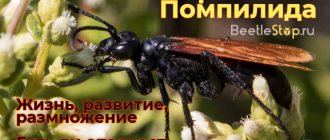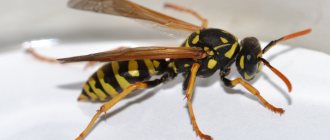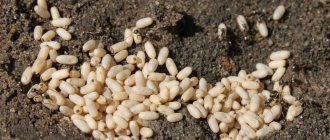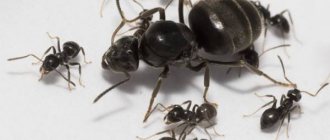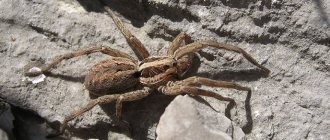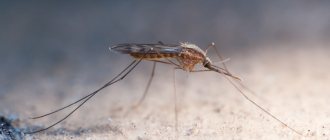Since ancient times, man has learned to use the poisonous biological fluid secreted by land reptiles for his own purposes. Despite the fact that often the secretion of insects and invertebrates, aimed at destroying a potential victim, is deadly, it is often used for medical and cosmetic purposes.
There is still debate about the benefits of wasp stings. By adding a certain amount of poison to medications, a large number of diseases are cured, but do not forget about a possible allergic reaction to it.
Benefit or harm from a wasp sting
There is a difference between honey bees and wasps. Unlike bees, which collect pollen and form a useful, beloved product, wasps are considered predators; their bite causes severe pain to the victim.
The consequences of introducing a sting into the body of a bitten person are much more serious, which can be seen upon visual inspection. The injected wasp venom contains concentrated components that not only repel the victim or enemy, but paralyze it.
At the moment of a sting, the wasp pursues the following goals::
- paralyzing an insect to transfer it to a nest for feeding and feeding offspring;
- protecting one's territory from a large animal or person.
By affecting the nerve endings, after receiving a bite, a person experiences intense pain, which sometimes cannot be compared with trauma to the skin in everyday life.
The main harmful effect of the venom of these insects is the manifestation of an allergic reaction to its components. For allergy sufferers, preparations have been developed based on a purified wasp product, which, when vaccinated, reduces the risk of a dangerous reaction of the body to the bite of a winged predator. Thanks to their composition, antibodies are produced that resist the body's reactions to uncontrolled attacks by individuals.
You can prevent the danger of defeat by your behavior. If you don’t destroy a wasp’s nest or disturb their usual way of life, they rarely attack. If they are disturbed, a whole swarm of winged insects can attack a person.
Moreover, they do not sting once, like bees and bumblebees when provoked, but inflict several bites in one attack, resulting in severe swelling at the site of the bite.
Despite the fact that the composition of the venom is close to that of bees, it is so allergenic that it can provoke anaphylactic shock.
The exact composition of the venom of this insect has not been fully studied; the main components make it possible to highlight the positive aspects of its effect on the human body. Thanks to stimulating, stimulating substances,
wasp venom after special treatment has the following effects on the body:
- activates metabolic processes in the body;
- stimulates the immune system;
- regenerates damaged skin;
- normalizes blood pressure.
Developments are underway to use the poisonous secretion against cancer. Many components of the poison are used not only in medicine, but also in cosmetology. However, it should be understood that independent use of a dangerous substance without special knowledge is dangerous and can lead to adverse consequences.
Consequences of a wasp sting: what is the danger?
Reactions to a wasp sting vary from person to person, ranging from painful sensations at the site of the sting to severe allergic reactions and death. About 1-2% of people develop complications that are fatal . Most often this occurs as a result of suffocation, which in turn occurs when wasps sting in the area of the face, head and neck. Bites to these areas of the body are most dangerous to human life and health.
The most initial manifestations after a sting:
- sharp pain
- burning,
- redness,
- edema.
Such symptoms may subside within a few hours. In this case, there is no reason to worry. At the same time, to relieve symptoms, you can additionally use creams against insect bites, apply ice or chilled objects. All this will help alleviate pain, remove redness and itching.
However, things don't always work out so well. If the swelling only intensifies over time, and the itching spreads throughout the body, then you need to sound the alarm : an allergic reaction is developing. Associated signs of so-called anaphylactic shock are as follows:
- Irregular (increased or slow) heartbeat.
- Labored breathing.
- Hoarseness of voice, hoarseness.
- Headaches, dizziness, loss of consciousness.
- Attacks of nausea and vomiting.
If such symptoms appear, an urgent call to the ambulance is mandatory!
Composition of wasp venom
The components that make up wasp venom have a rapid effect on the nervous system at the cellular level. Important tasks for the body are performed by acetylcholine and serotonin, which are responsible for transmitting nerve impulses to the central nervous system.
By actively affecting nerve endings, wasp venom provokes a sharp reaction of the immune system.
The composition of wasp secretion includes the following components:
- acetylcholine;
- histamines;
- phospholipase;
- hyaluronidase.
The first enzyme causes serious damage to the central nervous system. Exposure to histamine and toxins provokes the activation of inflammatory processes and an allergic reaction. For allergy sufferers, there is a risk of developing urticaria, fever, and Quincke's edema.
Under the influence of phospholipids, healthy cells are destroyed, which causes severe pain and inflammatory processes, manifested by swelling at the bite sites. Hyaluronidase has similar toxic properties.
Prevention
The most important preventive measure against wasp bites is not to cause aggression through sudden movements when an insect approaches. If a wasp is chasing you, you need to stop in one place and not move. If possible, avoid sweet treats in nature; wasps flock to tasty smells.
When going on vacation, pay attention to appearance and aroma: excessively bright clothes decorated with rhinestones and sequins will undoubtedly attract the attention of winged ones; the smell of perfume can cause aggression. You should avoid places where wasps gather in large numbers and do not touch the hives. If your body is overly sensitive to insect bites, carry anti-allergy medications in your purse.
Effect on the body
Norepinephrine slows down the circulatory system, which prevents the rapid dilution of the toxic substance and washing of the affected area. The main danger is that the bitten person does not know what reaction to the toxic substances will occur.
If you do not treat the affected area of skin in time, you may notice a characteristic reaction.:
- a white tubercle with a red dot in the center forms at the puncture site;
- during the action of toxic substances, a burning pain is felt;
- after a poisonous wasp bite, the skin turns red, inflamed, and thickens.
To prevent dangerous consequences, the place where the sting was inserted must be quickly processed. In addition to washing, it is advisable to take antihistamines so that the wasp venom is diluted and reduces its harmful effects.
The effect of the poisonous secretion depends on the individual characteristics of the victim. Therefore, if it is unknown whether he is allergic to the components of the wasp secretion, he should be taken to a medical facility as soon as possible.
Consequences and complications
The consequences of a wasp sting, like the consequences of a hornet sting, are dangerous for those who are prone to allergies.
Swelling may develop in the affected area, which quickly increases. If your hand is swollen, this condition does not pose any particular danger. But when such a reaction develops, airway obstruction may occur in the larynx or oral cavity.
An allergic reaction can manifest itself in the form of anaphylactic shock, which is likely to result in death.
Other consequences and complications depend on where exactly the person was stung by the insect. glaucoma , iris atrophy, etc. may later develop
Lethal dose from a bite
Since the wasp is capable of stinging up to several times in one attack and calling on relatives for help, the amount of injected poison can lead to irreparable consequences, including anaphylactic shock. Even if a wasp nest is accidentally damaged, a whole swarm of viable individuals will attack the victim.
The body's response depends on the amount of poison entering the bloodstream . The more it is, the higher the risk of death of the victim. If a person is prone to allergic reactions, one bite from an adult is enough to cause death. The reaction depends on the individual characteristics of the body and the level of functioning of the immune system.
General information
Wasps are insects that can be found in different places - both in villages and cities.
There are several varieties of these insects. However, the reaction to their bite is the same: it is very painful and unpleasant, since the venom of all types of wasps acts in a similar way. The ICD-10 code is W57 (bite or stinging by non-venomous insects and other non-venomous arthropods). But in some cases, a wasp or hornet is a particularly dangerous insect. After all, when talking about how dangerous a wasp sting is for a person, it should be taken into account that it can provoke a very acute allergic reaction . Therefore, it is most dangerous for those who are prone to allergies . Multiple bites are especially dangerous. Therefore, it is very important to know how to act correctly if a person is bitten by an insect, and what to do if an allergic reaction occurs. This will be discussed in the article.
Application in medicine
Despite the fact that no benefit has been identified from a wasp sting, its venom is widely used in modern medicine. The dangerous secretion of hymenoptera insects is used to make vaccines against their bites for people prone to allergic reactions.
The most dangerous time of year for attacks by flying predators is spring. During this period, allergy sufferers are recommended to be vaccinated in advance to prevent dangerous reactions of the body to insect venom.
After taking the vaccine, the body does not react so sharply to bites, which allows you to maintain a normal state in the event of an unforeseen situation.
The main use of a toxic substance in medical practice:
- treatment of hypertension;
- prevention of varicose veins;
- treatment of joints;
- therapy of skin diseases.
In addition, scientists are conducting experiments and developments in the direction of the poisonous secretion to combat cancer.
Allergy to a wasp sting: what to do to protect yourself from danger?
If you suffer from wasp allergies, you should avoid areas where these insects gather. The peak of wasp activity is observed in the hottest time of the year - from mid to late summer. It is in July and August that insects are most aggressive: during this period it is recommended to cover windows with special protective nets, use less perfume and eau de toilette (especially with a floral scent), and avoid colorful and bright clothes.
When wasps appear in the immediate vicinity, you should not wave your arms to drive them away, as this will provoke an attack and attract other insects. It is also not recommended to leave sweet foods on the table - fruits, pastries and jam, as their smell attracts wasps.
Application in cosmetology
Some substances that make up wasp venom have antiseptic, bactericidal, anti-inflammatory, and analgesic effects. The components promote skin rejuvenation, smoothing out wrinkles and restoring the natural epithelial layer. Despite the fact that a wasp sting is harmful to humans, the beneficial properties after processing the poison are actively used in cosmetology.
A properly processed composition of the wasp's biological secretion acts like Botox . Being a natural component, it does not have a chemical effect on the skin, due to which wrinkles are effectively eliminated and the skin maintains a fresh, healthy appearance.
In modern cosmetology, many drugs have been developed that have a beneficial effect on the skin. Therefore, wasp venom can have both detrimental and positive effects on the human body.
Wasp sting allergy: treatment
A specialist should prescribe therapy, so it is advisable to take the victim to the hospital as soon as possible. Typically, treatment for an allergy to a wasp sting involves the use of antihistamines, decongestants, vasoconstrictors, hormonal and non-hormonal local agents, as well as enterosorbents. In addition, your doctor may recommend taking a course of immunotherapy. The patient is given small doses of the allergen so that the body gradually gets used to it and ceases to perceive it as hostile.
First aid kit for the country: what you need to have with you to always help your child
If you take your child to the dacha, then you must have a first aid kit with you to help your child in any situation.
You should take antihistamines with you: “Zertec”, “Claritin”, “Suprastin”, “Fenistil”. They will ease allergic reactions in children. It is important to put painkillers in your first aid kit, as well as antipyretics: Nurofen, Ibuprofen, Paracetamol.
Disinfectants and disinfectants should also be in it. This is "Chlorhexidine", hydrogen peroxide, alcohol, brilliant green, iodine, bandage, cotton wool, a plaster if the child suddenly falls. Remedies for throat, runny nose, and ears will help against colds.
Traditional methods
There are many ways to relieve or reduce swelling after wasp stings. This is natural, because wasps have been biting people since time immemorial, and people have learned to use many plants, fruits and other available means when they need to quickly decide how to remove a tumor.
The first thing to try is an onion cut in half. Onion juice is an excellent antiseptic and contains tannins. Rub half an onion thoroughly over the bite area, this will relieve itching and slow down the development of swelling.
Instead of onion, you can take half a lemon. Raw potatoes have similar properties. It contains starch that can disinfect the wound. An excellent remedy is an aloe leaf cut lengthwise. Make small cuts on the inner sides of the cut leaf with a knife to better release the juice. Apply to the swelling and secure with a bandage.
The pharmaceutical product "Validol" can also reduce swelling. Drop a little onto a napkin and apply to the bite site. This drug contains alcohol and menthol oil, which, in turn, have disinfecting, soothing and vasodilating properties.
What to do if a child is suddenly bitten by a wasp
Why do wasps bite? Flying over the berries or fruit that the baby is eating, they sniff the baby. If he accidentally swung his hand, driving her away, then the wasp may perceive this movement as a sign of an attack. Wasps also attack because they want to expel a person from this place in order to feast on the contents of the fruit. When biting, the wasp releases an enzyme that attracts other wasps. The hornet that lives in tree hollows is also a threat to children and adults. There is a white mark on the hornet's chest and head. There are American hornets. They are very aggressive and attack in swarms. They live in depressions in the ground and in empty walls. They have short legs and furry antennae.
A wasp sting will frighten a child and cause him to cry. Parents can be scared too. But it is important to pull yourself together and calm him down so that he understands that everything will be fine. It is necessary to provide the child with first aid correctly. Bites on the face can last for several days. It’s even worse if the bite occurs on the lips or eyelids or scalp. In this case, you need to urgently consult a doctor. Minor redness and swelling can be quickly relieved with antihistamines, and within a few hours the child will forget that he was bitten by a wasp.

